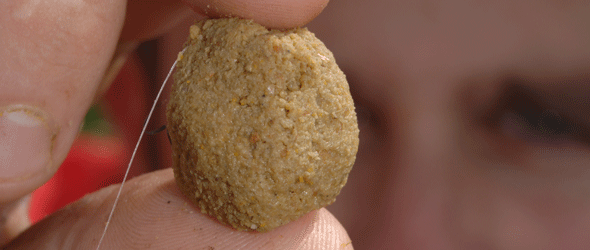Making paste to catch chub, carp and barbel
Paste is a fantastic bait that is often neglected by anglers, often due to the fact that it can be quite difficult to hook, and keep on the hook. But, get it right and you can enjoy some absolutely enormous hauls of match-sized carp, and smash your personal best chub, barbel or carp.
Paste is basically a soft and pliable mixture of powdered and solid ingredients that can be moulded around the hook. Because the bait is moulded around the hook, the hook is invisible to the fish, making it quite easy to trick the fish into taking the bait.
The most difficult part of paste fishing is introducing the baited hook into your swim without the soft paste falling off the hook, but with a little ingenuity this can be overcome quite easily.
There are two main types of paste – those used by match anglers to catch many fish really quickly, and those used by specimen anglers to trick big fish into taking the bait.
Making a paste for commercial carp
Match anglers tend to use paste in conjunction with a pole, as poles allow the paste to be lowered gently into the swim, rather than cast it out. This means that the paste will remain on the hook better.
Paste for match fishing is really very simple indeed. Any finely ground fishmeal groundbait can be made into a paste in seconds, providing a simple, soft and highly effective carp bait.
Simply take a clean bait box, scoop up about half a cupful of water and add a little fishmeal groundbait. Mix it up thoroughly, and keep adding groundbait and mixing until you have a soft and sticky ball of paste. And that’s all there is to creating a great paste ideal for use on a pole rig on commercial carp waters.
Making a paste for river chub
This paste is a little trickier to make, a little more expensive, but it stinks to high heaven, sticks to the hook perfectly and helps catch some great chub.
Take a chunk of Danish Blue cheese and crumble it into a round mixing bowl. Sprinkle a little flour over the pieces and continue to break it up using our fingertips. Keep adding flour until the cheese resembles fine breadcrumbs.
Now is the time to add any colouring and additional flavour to the mix. A couple of drops of Supercook cake and icing colouring is perfect here, and it’s fairly cheap too.
Tip a couple of teaspoons of water over the mix and begin turning it over with a fork. The cheese, flavour, colour and flour will begin to bind. Keep mixing with the fork and adding very small quantities of water until the mix begins to ball-up. Now you will be able to get hold of the mix and knead it into a ball. This will distribute the colour evenly and soften the paste.
Once it’s thoroughly mixed through, divide the paste into suitable sized lumps to see you through a session, bag it securely and pop in the freezer until you need it.
This paste will last for years, and it can even be re-frozen a few times, and still catch chub!
Making a paste for big carp
By far the best paste to use when fishing with homemade boilies is simply a little of the leftover boilie mix which has been wrapped around the boilies itself. This will stick to the boilies perfectly, release a scent trail for a long time, and take ages to break down. But, not all carp anglers make their own boilies, so here’s what you can do…
Crack a couple of eggs into a round mixing bowl, add any colouring or flavourings you wish and then mix thoroughly using a fork. Now sprinkle a little finely ground carp groundbait into the eggs and continue mixing.
Keep adding the groundbait and mixing until the mix stiffens enough for it to be kneaded by hand. Knead it thoroughly to ensure all the crumbs absorb the moisture from the eggs and there you have it – a great specimen carp paste that can be moulded around a boilie, a pellet, meat, even a cork ball.
The eggs used in the mix will help bind this paste, ensuring that is takes a long time to break down once it hits the bottom.
Hooking paste
This is really very simple to do, regardless of whether you intend presenting the paste around the hook directly, or around a secondary bait such as a boilies or pellet.
Simply tear off a chunk of paste that will be large enough to wrap around your hook or bait. Flatten it slightly, but not too much. Now place your hook or bait onto the middle of the paste and gently fold the paste around.
Use your fingertips to carefully squash the paste until it forms either a teardrop shape, if you are moulding it around your hook, or a ball, if you are moulding it around another bait. And that’s all there is to it!
Popping up your deadbaits for extra visibility
Whether they are frozen or defrosted, deadbaits sink like a stone. This is hardly ideal as there may be times when you are fishing over a thick bed of weed or a thick layer of fine silt – the deadbait may become entangled in the weed or it may sink right out of view.
The way around this is to pop the deadbait up so it remains visible and snag-free at all times.
What you will need
To do this effectively you will need a pair of forceps, some wire, a baiting needle, wire cutters and either one or two red, buoyant Fox Bait Poppers. The amount of Bait Poppers you use will depend upon the size of the deadbait you are fishing with. The larger the bait, the more poppers you will need.
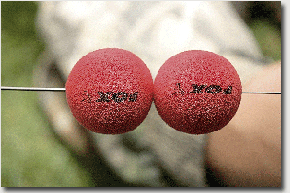 |
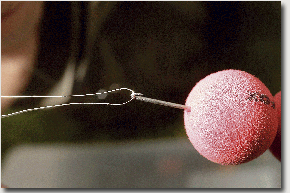 |
|
|
STEP 1 |
STEP 2 |
|
 |
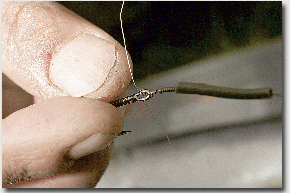 |
|
|
STEP 3 |
STEP 4 |
|
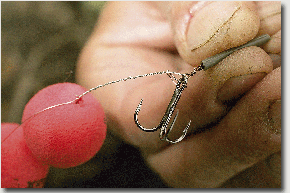 |
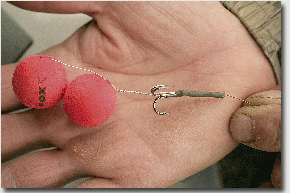 |
|
|
STEP 5 |
STEP 6 |
|
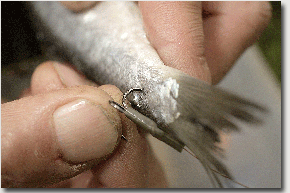 |
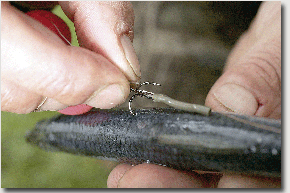 |
|
|
STEP 7 |
STEP 8 |
|
|
|
Here's the finished pop-up rig. The bait will sit up, on top of the weed, begging for a pike to snap it up. |
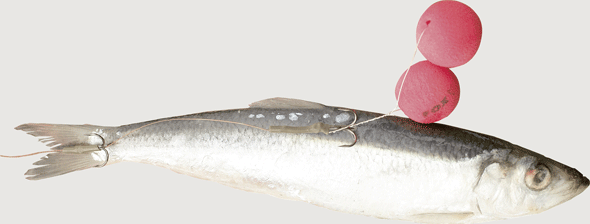
Flavouring deadbaits for pike fishing
Many deadbaits ooze oils and blood, but it is possible to flavour deadbaits to make them even more attractive.
Although there aren’t that many flavourings out there that cater for the predator angler, there are enough. Most specialist fishing tackle outlets stock them, and one of the most popular in recent years has been Predator Plus – a red liquid that pike seem to love.
The best way to flavour deadbaits is to inject them. This forces the flavouring right inside the bait, making it leak into the water steadily for a long time.
As the vast majority of deadbait flavourings available are oil-based, using a very fine needle with your syringe isn’t ideal. The needle will become blocked very quickly and unusable.
The best thing to do is to invest in a deadbait injecting kit, comprising a large syringe and a very wide bore needle. This will allow you to inject those oily additives easily and quickly.
Injecting your deadbaits
Adding extra scent and attraction to your deadbaits is easy, but you must take care. Firstly you need to defrost the deadbait fully or it will not take on any of the injected additive.
Once defrosted place the deadbait on the ground, not in your hand. If you slip and inject yourself accidentally you will suffer all manner of possibly fatal complications.
Fill the syringe with the required amount of additive, push the needle onto the end of the syringe, pierce the deadbait deeply with the needle and squeeze a little additive into the fish.
Do this as many times as you like, piercing the bait and squeezing a little additive into the hole formed.
Once in the water the additive will seep from the fish and be carried along with any flow or undertow where it will arouse the interest of a nearby predator and they will follow it right to your bait.
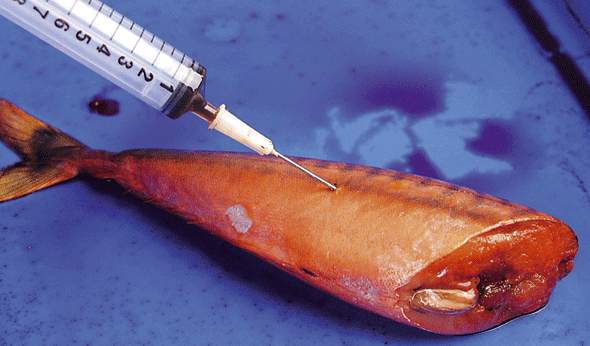
How to hook deadbaits when pike or zander fishing
There is a very simple method to hook deadbaits to ensure they not only stay on the hook throughout a powerful cast but it also ensures that the hooks are in a prime position to ensure that they hit home and the predator is landed.
Correctly created wire pike rigs will have two sets of treble hooks, one positioned at the end of the wire, and another set around 2-3 inches along the wire.
The treble hook that is locked along the wire should be set securely within the tail root of the deadbait. It must be locked as tightly as possible within the bait as this hook takes the most pressure upon the cast.
The treble hook that is positioned at the end of the wire trace should be lightly nicked into the flesh of the back or side of the deadbait.
If you are using semi-barbed treble hooks where two of the three points are barbless, make sure you insert the barbed point into the deadbait as this hook will grip the bait much firmer than the barbless hooks.
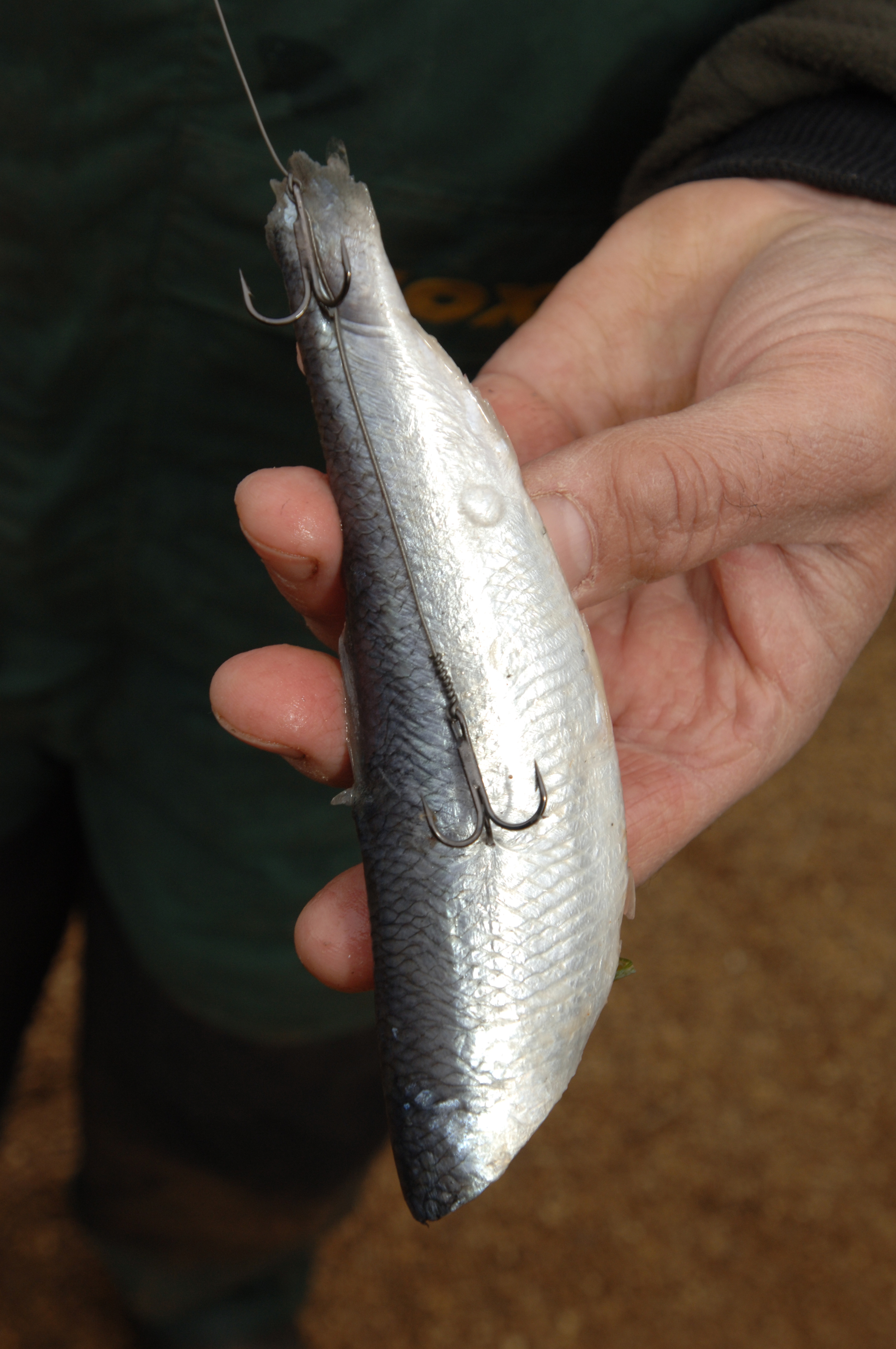
Colouring deadbaits
If you want to make your deadbaits even more attractive to any passing pike you could colour them. This will also trick wise pike into taking baits that would otherwise reject.
To colour deadbaits you will need a lot of newspaper, some forceps, some kitchen paper, an old bait box and your chosen dye.
The best dyes to use are those that carp anglers use for colouring boilies. They are extremely potent and, when added to a little water, provide a great deadbait dye.
Mix a spoonful of colouring with a cupful of water in your bait box. Now use the kitchen paper to dry your deadbaits as much as possible.
Grip your deadbaits by the tail with your forceps and swish them around the dye until the whole body becomes coloured. Once dyed, leave the baits to dry on the newspaper (try not to drip the dye any anywhere that may stain). The dried baits can be wrapped in cling film and frozen for later use.
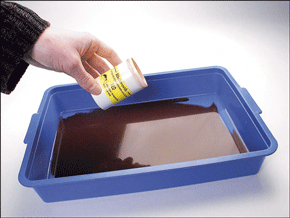 |
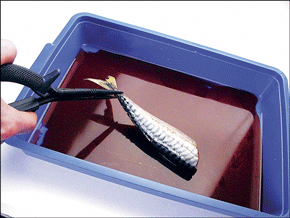 |






